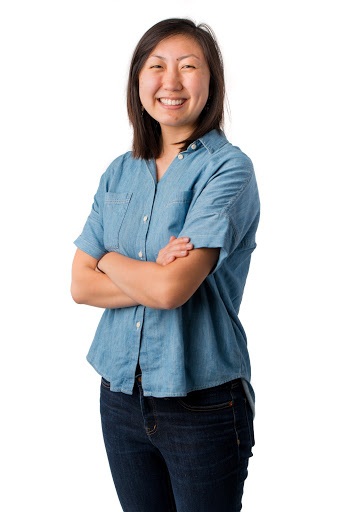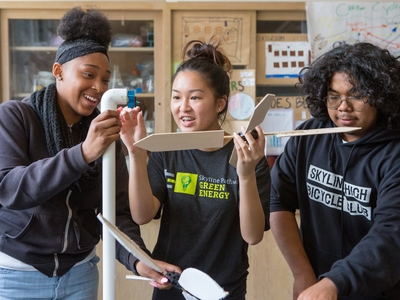New Designs for School
Using Design Thinking for Equitable Remote Classrooms
Topics
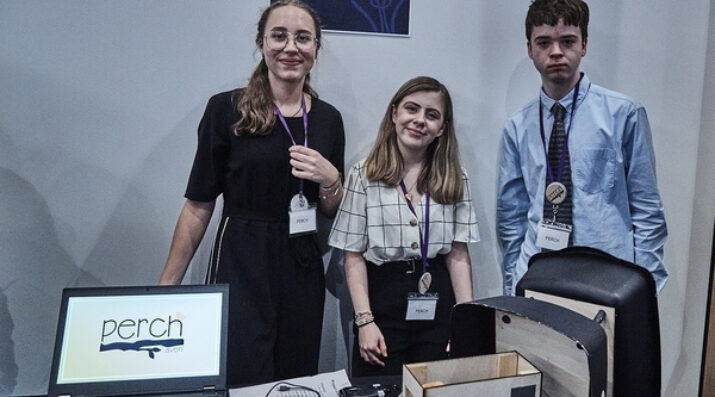
We’ve all had the experience of truly purposeful, authentic learning and know how valuable it is. Educators are taking the best of what we know about learning, student support, effective instruction, and interpersonal skill-building to completely reimagine schools so that students experience that kind of purposeful learning all day, every day.
Educators can redesign "classrooms" for equitable and engaging virtual learning with design thinking, community-centered learning, and teacher resources.
The education system was not designed for a pandemic, and those gaps are being exposed—quickly. The LA Times reported that this spring, almost one-third of high school students in LAUSD, one of the largest districts in the country, were not showing up for class after the move to online learning. The ones who were showing up were disengaged and challenged by sitting at a computer screen all day. Topics that seemed irrelevant to them while sitting in a classroom, with few other distractions, now became even harder to focus on in the at-home setting.
Low-income and underserved students are especially affected. We often look at disengagement in classrooms, now exacerbated by virtual learning, as a stand-alone problem. However, it has insidious roots in the way that our education system is designed. The U.S. education system prioritizes memorizing facts and classroom compliance rather than celebrating creativity and uniqueness. Our schools were designed on values and outcomes that no longer make sense for today’s world. In school, students rarely get the chance to ask the questions, only to answer them. That means that dominant White voices—those who wrote the textbooks—are the ones shaping what learning looks like. Students are disengaged because the problems they are solving are not relevant to them.
The rise of remote learning during COVID-19 has led to a reckoning of our poorly designed learning systems. The cracks are showing in the classic sage-on-a-stage model, resulting in widespread disengagement and loss of learning across the U.S.
While students learn from home, there is a need for students to engage at their own pace and have more voice and choice in their learning. Home is not like a classroom. It is a learning environment with uncontrollable variables that require flexibility in how and when students learn. Not every student can be ready and able to sit behind a computer screen with no distractions.
In order to properly redesign our classrooms for equitable and engaging virtual learning, we need to start from our goals and design backwards. We need to...
- Redesign our learning goals
- Rethink White-centric designs to learning
- Create new resources for teachers to move toward new ways of teaching
The goals that we set for students need a complete redesign. Typically in school, students learn through textbooks and worksheets, learning a standard set of facts. However, this model is antiquated. Instead, 21st-century schools should focus on building strong mindsets: things like creativity, agency, and empathy.
In order for students to grow these mindsets, they need the opportunity to take more agency over their own learning. For us, that is rooted in community-centered learning. In community-centered learning, students build projects for their own community, often service or impact-related. Unlike traditional learning that happens in the safe bubble of a school building, community-centered learning encourages classrooms to take their learning outside of those four walls to tackle the problems they find around them. Through the intersection of project-based learning, social-emotional learning, service learning, and STEM education, we empower students to use their unique gifts and ideas to solve real problems. Rather than limiting learning to the problems of yesterday, learning becomes relevant to the problems of today and tomorrow.
At Project Invent, we're reimagining the classroom as a place where students identify problems that they are passionate about in their community and build creative solutions. In our program, students learn design thinking and engineering skills to create technologies for good. Students have created everything from smart wallets to help the blind detect bill denominations to steering wheel attachments to prevent drowsy driving. Their passions guide the problems they tackle and they see their creativity and impact manifest through a physical invention. Teachers follow our free curriculum, attend our free training, or join our yearlong fellowship to learn how to practically bring community-centered learning into their classrooms. They dive deeper into how to change their own teaching practices to build cultures of innovation. These practices of making failure OK and letting students take the wheel then convert into important student mindsets like resilience and agency.
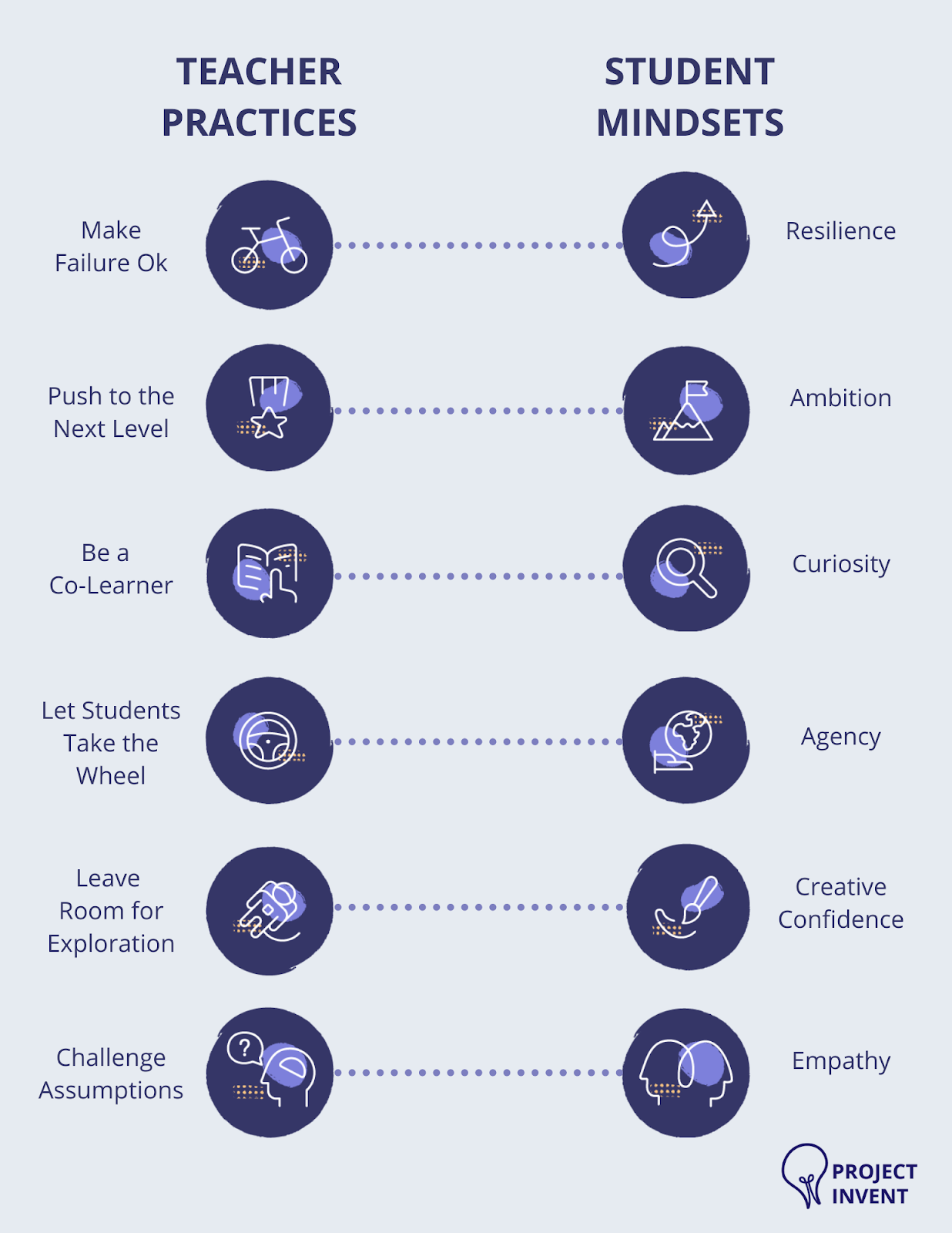
Courtesy of Project Invent
Of course, with students learning from home, there is an added challenge to community connection. Everything needs to be virtual or socially distant. However, students can go on a community walk to spot problems in their own neighborhoods or call an aging grandparent to learn about challenges they face. There are still great ways for students to engage with their community: empathy is a skill that can be built remotely just as well as it can in person. In addition, tackling problems related to COVID-19 can help students feel more agency over a situation that can otherwise feel out of their hands. In response, we developed a resource library for students tackling problems in their immediate home or community to get started.
We've already seen this community-centered model increase diversity in STEM classrooms around the nation. Students connect to more personally and culturally relevant topics, and engage in more risk-taking and resilient learning behaviors by tackling a problem they care about. Among Project Invent students, 63 percent are traditionally underrepresented in STEM and 52 percent identify as females. By designing Project Invent as a STEM program focused on social impact rather than robots and cars, and allowing students to bring their personal interests and passions into applying STEM, we're able to involve students who typically don't resonate with the traditional curriculum and can bring their own interests into the field.
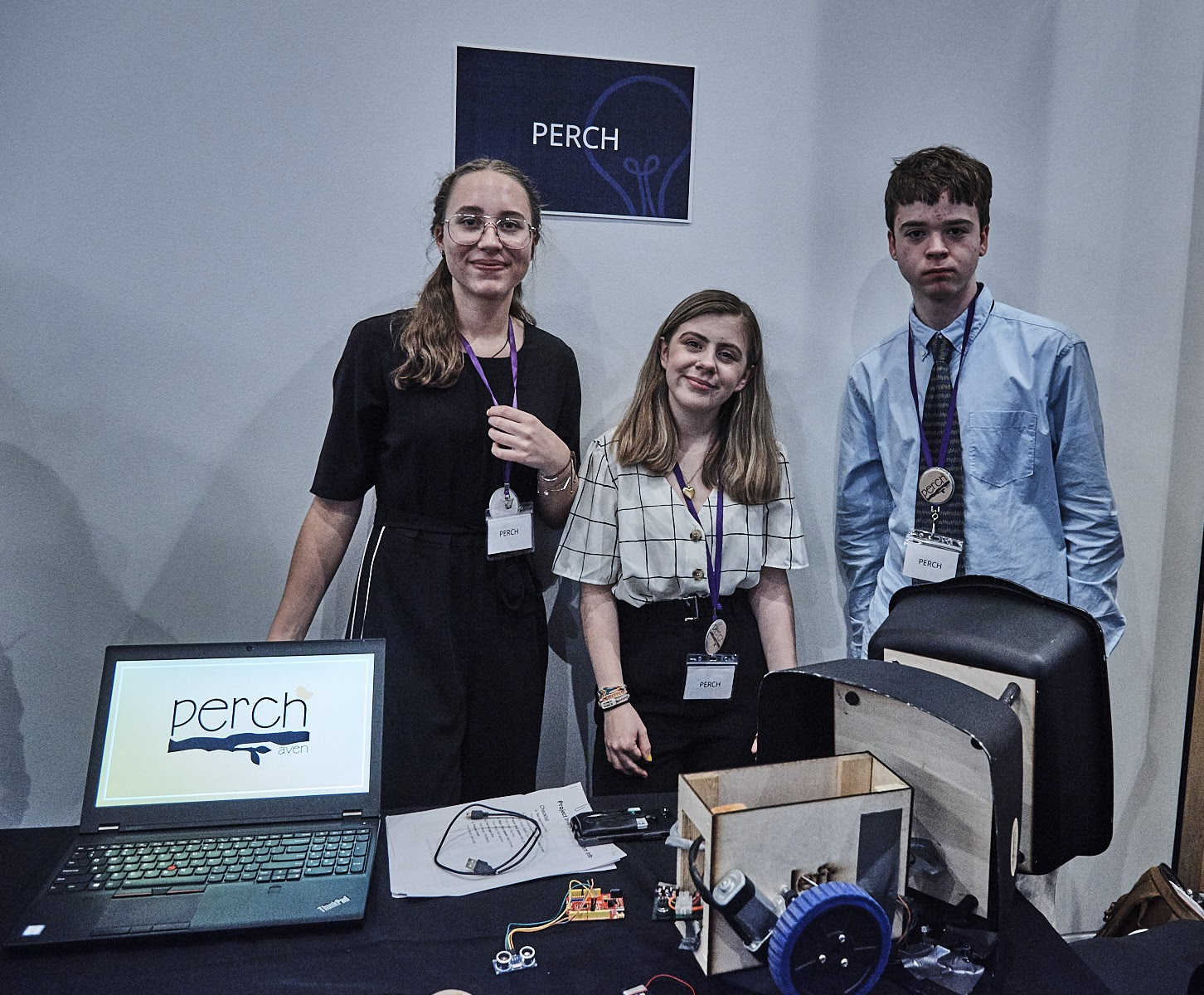
The Perch team smiles for the camera at Demo Day with their invention of a shopping assistant robot for people who use wheelchairs. (Courtesy of Project Invent.)
Students get a chance to ask their own personally meaningful question: How can we get safe drinking water to my neighbors? How can we combat concussions on my high school’s football team? These questions lead to hugely powerful answers. Margaret Hiza Redsteer, a research scientist, was quoted to say: “Who you are helps define how you look at the world and how you approach problems.” This insight shows us the power of democratized innovation: when we empower all youth to consider how they would solve the problems in their own communities, we ensure that no population gets overlooked. Their inventions become a platform to share the problems they see and spotlight what needs to be solved.
Community engagement group projects like Project Invent can also be hugely helpful for teenagers during a pandemic to continue to have a safe space to foster social-emotional development. Despite the virtual setting, teenagers especially rely on their social connections and peer groups as a way to think independently and take risks beyond the family unit. Having group projects to continue to work on personally meaningful problems can be hugely beneficial to student mental health.
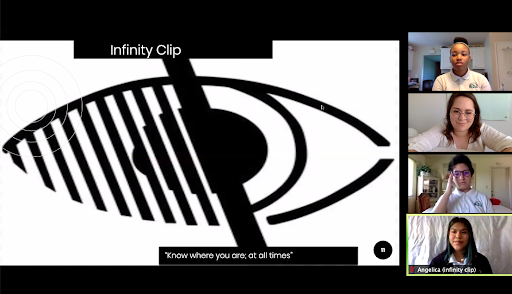
Students from San Diego’s e3 Civic High School present their invention, Infinity Clip. (Courtesy of Project Invent.)
As we move into an unprecedented era of education, we need to self-reflect: in this time of remote learning, we should be focusing not on compliance but on learner agency. At Project Invent, we know powerful learning happens when we let students take the wheel. During this pandemic and beyond, let’s make the community our new classroom.

